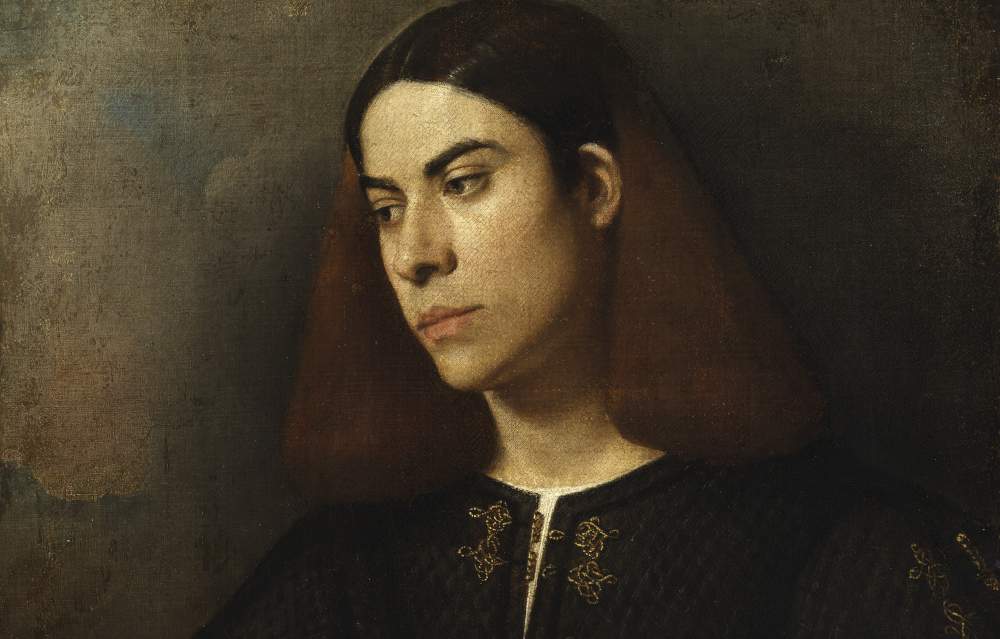From March 31, 2022, the Portrait of a Young Man made by Giorgione in about 1503, which is kept at the Museum of Fine Arts in Budapest, will be on display at the Gallerie dell’Accademia in Venice. The painting, which will be placed in Room VIII on the second floor of the museum building alongside the artist’s other works, is directly related to Giorgione’s Vecchia in both compositional and stylistic terms. The presence of the two paintings next to each other on the same wall will probably give rise to further reflections on the hypothesis, put forward by critics, that the canvas now in Budapest constitutes the covered [...] depento con un’homo con una veste de pelle negra" that accompanied the Vecchia, according to the Vendramin inventory of 1601. The loan thus represents an important opportunity to return to reflect on the centrality of the great Venetian painter ’s artistic production and to admire a work of the highest quality alongside other masterpieces by Giorgione in the museum: the Sacred Conversation, the Old Woman, the Tempest, the Concert, and the Nude. Roberta Battaglia, curator of the 15th- and 16th-century collections at the Gallerie dell’Accademia in Venice, says that "the proposal to interpret the portrait as an example of contemplation and neo-Platonic asceticism suits the inner dimension of the character to which the abstract and ideal quality of the light also contributes. The complexion of the face stands out against the compact mass of the dark hair, distinguished by an unusual bichromy, which has suggested the presence of a reticule or the use of a dye to lighten the side bands of hair, according to the mostly female fashion of the time."
“The initiative fits into the perspective of exchanges with other international museums that the Gallerie dell’Accademia has been strongly increasing in recent years, aimed at creating extraordinary opportunities for dialogue with the works in the collection,” said Galleries Director Giulio Manieri Elia. "In this case the initiative is particularly significant because it adds an excellent work by Giorgione to the room that brings together his masterpieces, and for this we are particularly grateful to the Budapest Museum."
"This extraordinary masterpiece, one of the few surviving works by Giorgione, comes from the collection of the only Venetian patriarch of non-Italian origin, the Hungarian Giovanni Ladislao Pyrker, who lived in the 19th century, and thanks to his generous donation it has become part of the Hungarian national heritage," added László Baán, director general of the Budapest Museum of Fine Arts. “We are delighted that, thanks to the excellent collaboration between the Gallerie dell’Accademia in Venice and the Museum of Fine Arts in Budapest, the painting can return to its native land, Venice, for the first time in two hundred years.”
Dóra Sallay, curator of Italian Painting (1250-1500) at the Budapest Museum of Fine Arts, concludes, "Giorgione’s Portrait of a Young Man is one of the most important works in our museum, which also stands out among Renaissance portraits for its enigmatic subject matter: the young stranger’s absorbed expression, the gesture indicating deep feeling, and the series of hard-to-decipher emblems painted on the parapet have given rise to countless interpretations and strike all of us with the force of their mystery."
Image: Giorgione, Portrait of a Young Man, detail (c. 1503; Budapest, Museum of Fine Arts). Ph.Credit: Szépművészeti Múzeum / Museum of Fine Arts, Budapest
 |
| At the Gallerie dell'Accademia in Venice, Giorgione's Portrait of a Young Man on loan from Budapest |
Warning: the translation into English of the original Italian article was created using automatic tools. We undertake to review all articles, but we do not guarantee the total absence of inaccuracies in the translation due to the program. You can find the original by clicking on the ITA button. If you find any mistake,please contact us.